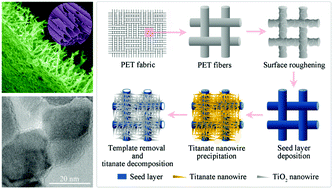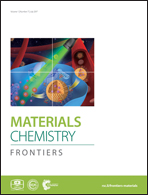Photocatalytically active TiO2 microtubes assembled with radially aligned nanowires†
Abstract
Hollow nanoarchitectures enhance mass transport whilst retaining the merits arising from these unique nanostructures, which are thus ideal structures for an efficient photocatalyst. In this study, polyester fibers were utilized to construct TiO2 hollow microtubes with radially aligned nanowires, through multi-steps of sol–gel, solution precipitation, and calcination. The TiO2 microtubes are ca. 10 μm in diameter, assembled with radially aligned nanowires that are ca. 40 nm in diameter and 1 μm in length. The microtubes as a whole consisted of anatase, rutile and brookite, which exhibit a band gap of 3.05 eV and a specific surface area of 36.0 m2 g−1. When utilized to assist photodegradation of rhodamine B in water under UV light illumination, the microtubes exhibited an efficiency much higher than that of sol–gel TiO2 nanoparticles, and similar to that of commercial P25 TiO2 nanoparticles, which could be attributed to the abundant surface hydroxyl groups and the nanowire-assembled hollow structure. Also, because of the easy recovery of the photocatalyst from the slurry system, the TiO2 microtubes developed herein are good candidates for effective photodegradation of organic pollutants in water.



 Please wait while we load your content...
Please wait while we load your content...